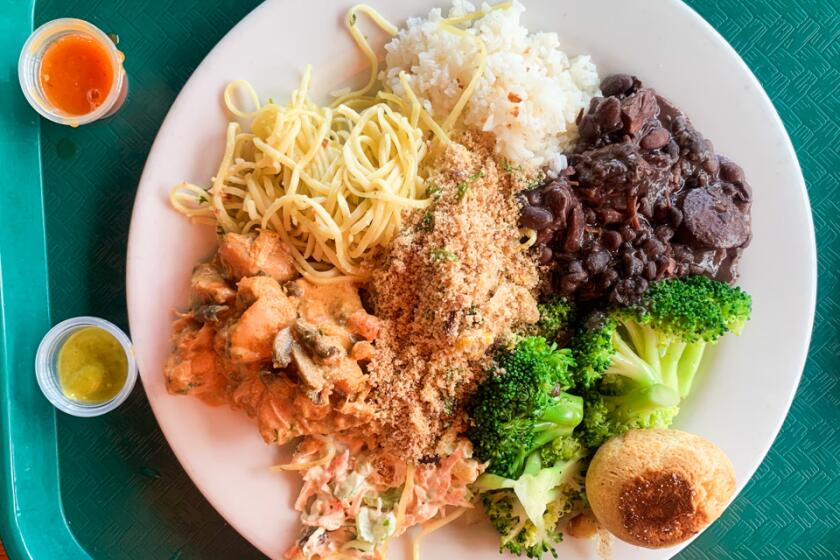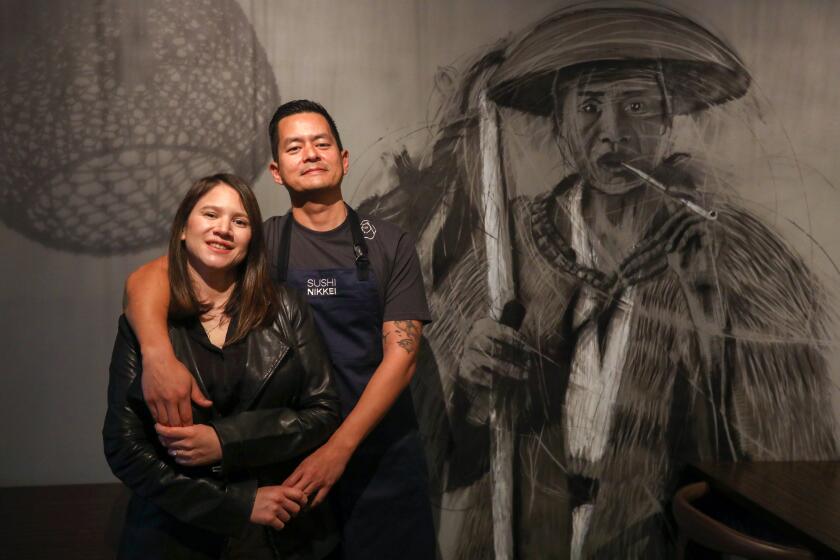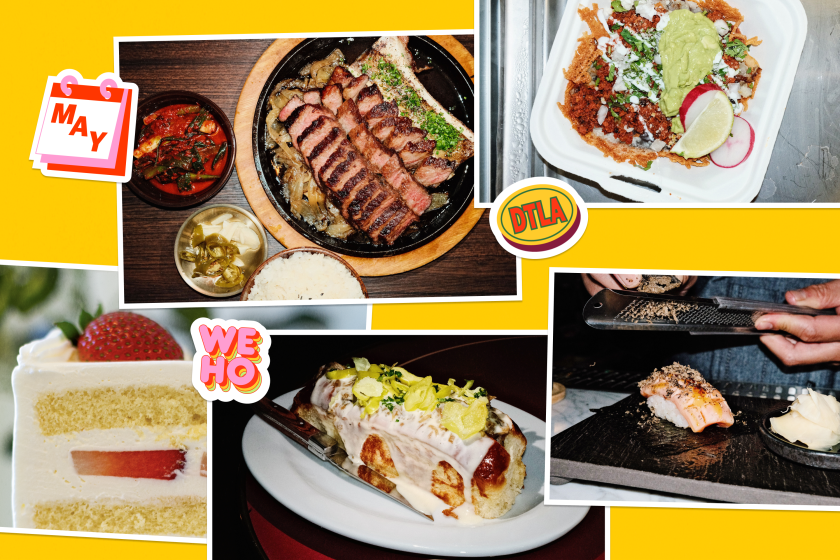Chianti of the Century?
For more than a century, great vintages in Europe’s wine regions came along infrequently enough to warrant great huzzahs by winemakers, who would wax rhapsodic. And in years when the crop didn’t turn out so great, there would be much euphemistic blather.
In the last decade or so, though, there have been so many great vintages that winemakers are getting gun-shy about commenting on them. Consider: Bordeaux and Burgundy had enough “vintages of the century” in the last 15 years to last anyone a lifetime, and winemakers actually have grown weary trying to get anyone to believe that, yes, another great vintage was upon us.
For that reason, the Italian public relations machine has been more cautious than effusive over the 1990 Chianti wines, and yet rarely does a vintage come along that achieves so much. Even the great 1985 vintage in Chianti, which rated a perfect 10 on most everyone’s vintage chart, appears to have been exceeded by the 1990s.
Does this mean every 1990 Chianti is great? No, as in any great vintage, only those wines made carefully from good grapes offer excitement and richness. It’s always possible to make a sow’s ear from a silk purse.
*
Moreover, today there are four drawbacks to buying 1990 Chianti:
* The vintage was so beneficent for the ripening of the Sangiovese grapes that in many instances the resulting wines are so heady with fruit and alcohol that they are not exactly like old-style Chianti.
* The more modern approach to winemaking in much of Italy over the last decade has created an international style of wine that focuses more heavily on aging the wine in new oak barrels, which give wood flavors to the wine. Some wines remain traditional, but many are more nuovo .
* The very best and most highly prized Chianti are in such demand that some never hit store shelves, and when they do, they are snapped up rapidly by discerning collectors.
* Like so many great vintages the world over, 1990 Chiantis are not going to be lovable instantly. You may swoon over the aroma of a great Chianti when it’s young, but only time can make the taste of such a great red wine supple enough to be truly enjoyable, and Chianti from 1990 is one of the prime examples of a wine that needs a patient owner.
A fifth drawback is price. When the ‘85s were released, Chianti owners had lowered their prices as a means of recapturing a market gone sour after 24 deaths were reported in Italy in 1986 due to tainted wine. That scandal prompted removal of Italian wine from some store shelves here and dropped prices for Chianti for a number of years. Through about 1989, most regular Chianti was in the $6 range; standard Chianti Classico (from the heartland region of Tuscany) was no more than $9, and Riserva wines, the best of each producer, were $15 at most.
Today, Chianti producers see high demand for their products, especially from the growing number of Italian restaurants in the United States. That, combined with a weak dollar, has pushed prices for much of Chianti to levels more in keeping with what great wine commands on the international stage, a stage widened in the last five years with the opening up of the European Community.
Having said all that, I still feel that 1990 Chianti is a vintage worth buying, drinking and cellaring. I still have a few 1985 Chiantis from the most recent great vintage, and I wish I had bought more.
The following 1990 Chiantis were tasted at various events and are rated in a very general order of impressiveness. (The more red stains on my tasting book, the more excited I was about the wine.)
* 1990 Fattoria di Felsina “Vigneto Rancia” ($30)--Spectacular depth and fruit, not typically Chianti in aroma because of the power, but there is a magnificent black cherry, vanilla and rich fruit base and a huge but tart finish. It’s a classic Chianti melding the depth and earthiness of the past with more modern techniques employed by Franco Bernabei, one of Italy’s greatest winemakers. This wine achieved the top score of all Chiantis in the recent Winter issue of Gambero Rosso, the Italian food and wine magazine now being published in English.
* Fontodi “Flaccinello” ($40)--Amazing depth and intensity in this very dark, powerful, almost-overripe wine. The flavors are generous and deep, with hints of chocolate and anise and a dense aftertaste that would be great with sharp dried cheeses. Not as graceful as the above wine, and not as typical of old-style Chianti, but a wine that should appeal to those who love weight and still want a bit of grace.
* Tenute Marchese Antinori “Riserva” ($22)--An extremely well-endowed Chianti that still pays homage to the soil, not the barrel. Not a thick wine, but beautifully structured with rose petals, tar, violets, a trace of anise and a complex finish. There is a load of fruit in the mouth, and the aftertaste is pure silk. This wine is equal to (maybe greater than) the 1985 Tenute Marchese, which is still going strong.
* Castello di Fonterutoli “Ser Lapo” ($24)--An intriguing blend of the old style of Chianti with the new. Loads of fruit, but hints of truffles and earth, and then a toasty note from aging in small barrels. A great example of what Chianti can be at its peak, blending the modern art with the ancient. With a bit of air, the wine is great now, but it will age nicely for at least five years.
* Terrabianca “Vignadella Crochet Riserva” ($20)--The more modern style here exhibits bold, ripe fruit and an almost sweet taste with body and richness. A bigger, fuller Terrabianca wine called “Campaccio Riserva” has a lot more oak, but at $40 is not the value of this bottling. At $20, this is a great wine and a producer to watch.
* Castello d’Albola ($15)--Faint aroma of fresh roast coffee, generous cherry fruit and delicate but complex flavors. Not as deep or powerful as the previous wines, but the fruit dominates the finish.
* Melini “Laborel, Riserva” ($12)--Sour cherry, tea and violet notes; a taste of earth and fruit. Lovely texture of fruit and tartness. Needs a bit of time, perhaps two years, but already tastes very good with well-seasoned food.
* Castello di Gabbiano ($8.50)--Lighter-styled wine with excellent fruit, classy texture and a good finish. Good value.
* Castello di Volpaia ($10)--In some ways, a better value than the above wine because of a bit darker color, a little more weight, more violets in the aroma and a deep, complex finish.
* Villa Antinori “Riserva” ($11)--This is the little brother of the Marchese wine, and it’s a lovely expression of fruit, balance and all the Chianti flavors and aromas without the depth of the “Tenute.” Not for aging as much as for pairing with the right foods now.
* Castello di Rampola “Riserva” ($28)--A ripe, anise-scented wine with great tartness and potential. A wine to lay down for at least five more years.
And here is a wine that is not a Chianti, but made from the same grape:
* 1990 Fattoria Paradiso, Sangiovese di Romagna ($20)--A most generous wine with loads of fruit, fresh deep flavors, and a broad and appealing finish without harsh tannins that works well with a wide variety of foods.
A final proviso: Do not expect these wines to be that impressive by themselves. Tasted alone, without food, wines like these can soon taste hard and tire the taster. But serve them with the appropriate fare, and watch the bottles go dry in a hurry.
Wine of the Week
1994 Shooting Star Zin Gris, “Pacini Vineyard” ($8)-- Jedediah Tecumseh Steele, the former winemaker for Kendall-Jackson Vineyards, now produces wines under the Steele Wines name. This wine, using Steele’s second label, is far more serious than the typical insipid White Zinfandel. It’s made entirely from Zinfandel grapes grown on a 90-year-old hillside vineyard in Mendocino County. And it may be the first vineyard-designated White Zinfandel. It is made more like a rose, and its berry-like aroma and relatively dry taste make it delightful with sausages, hot Asian dishes and other spicy foods. The name Shooting Star comes from Steele’s middle name, which means “Born under the sign of a shooting star.”
More to Read
Eat your way across L.A.
Get our weekly Tasting Notes newsletter for reviews, news and more.
You may occasionally receive promotional content from the Los Angeles Times.





